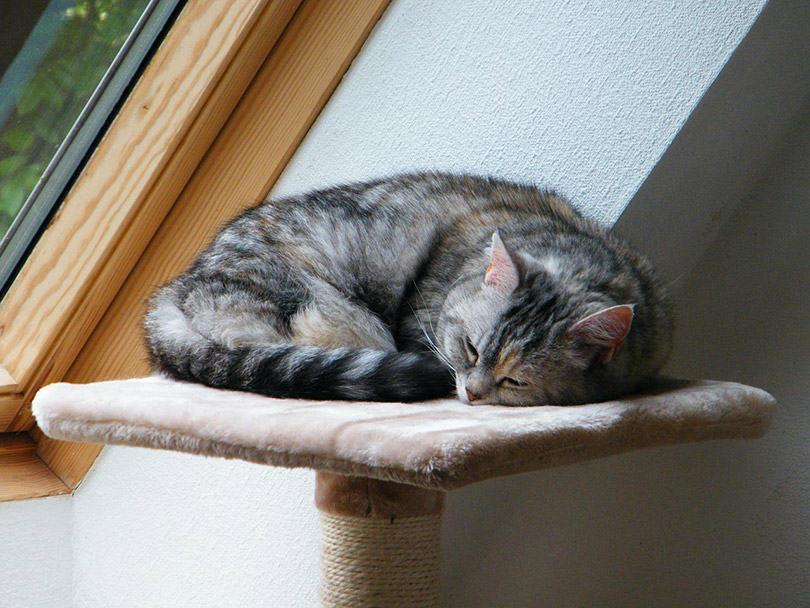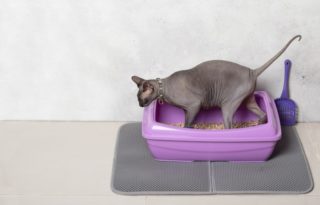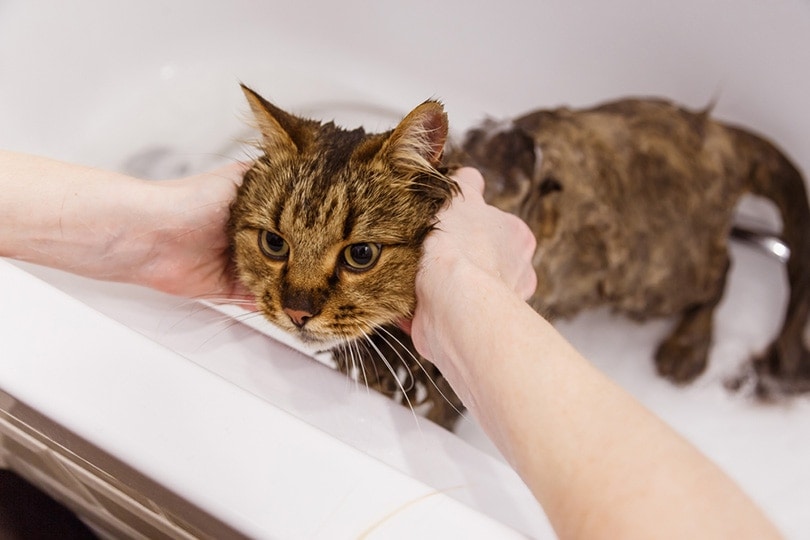Why Do Cats Like Scratching Posts So Much? Vet Approved Benefits & Facts

Updated on
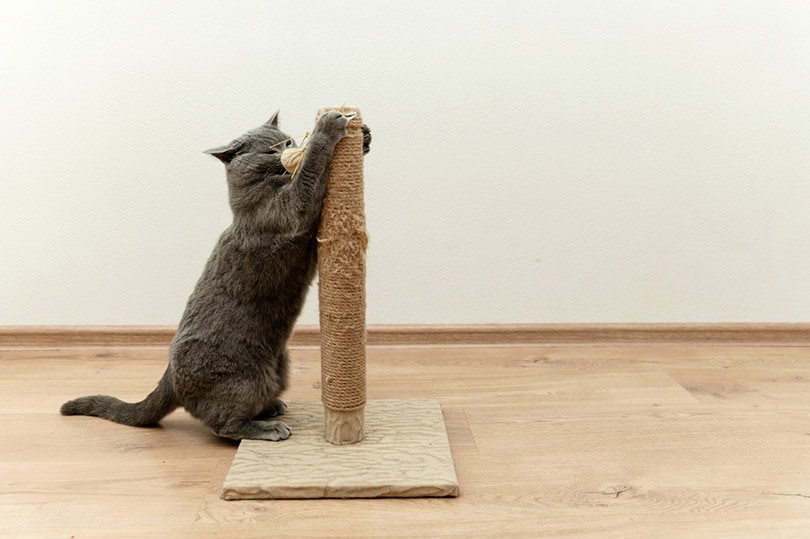
There are scratching posts at every pet store and everywhere you look online. You may be on the fence about offering one to your finicky feline. Will they even use it? Or perhaps you’re getting ready for a new addition to the home and not sure if your kitten needs one. Cat scratching is instinctual and soothing, among other things. We have you covered with everything you need to know about cat scratching behavior and the benefits of scratching posts. Keep reading to learn more!
Do Cats Actually Use Scratching Posts?
Yes, cats use scratching posts. Many pet parents swear by their scratching posts as a way to prevent negative scratching behaviors, like those that destroy their furniture or rugs. Cats will scratch, whether you give them something of their own to scratch on or not, so scratching posts are the perfect way to give your feline their very own spot to scratch and stretch.
Why Cats Scratch
Scratching is a natural behavior for cats for many reasons. If your kitty is clawing more than usual, it may be a sign that something is wrong, like they’re having trouble keeping up with their nail shedding or are anxious. You should note any other unusual symptoms and discuss them with your vet to pinpoint the cause.
- It’s their instinct to defend themselves and hunt for food. Cats may not need to defend themselves as kings and queens of the couch, but it’s a natural behavior to make sure their claws are sharp and ready, should they need them.
- It keeps their nails and paws healthy. The scratching motion stretches and exercises their feet, keeping them flexible and strong for fast running or quick attacks. Scratching also helps keep claws sharp by removing the dead outer layer as it sheds.
- It marks their scent. When they scratch on the post or anything else, their paws leave their distinct scent, marking it as theirs.
- It is soothing. You may have heard certain types of scratching referred to as “making biscuits.” Cats like to do this when they are happy and relaxed, so you’ll often hear them purring while scratching.
- They are bored. If your cat has nothing better to do, they will scratch. Without plenty of scratching posts and toys to play with, they may turn to more destructive habits.
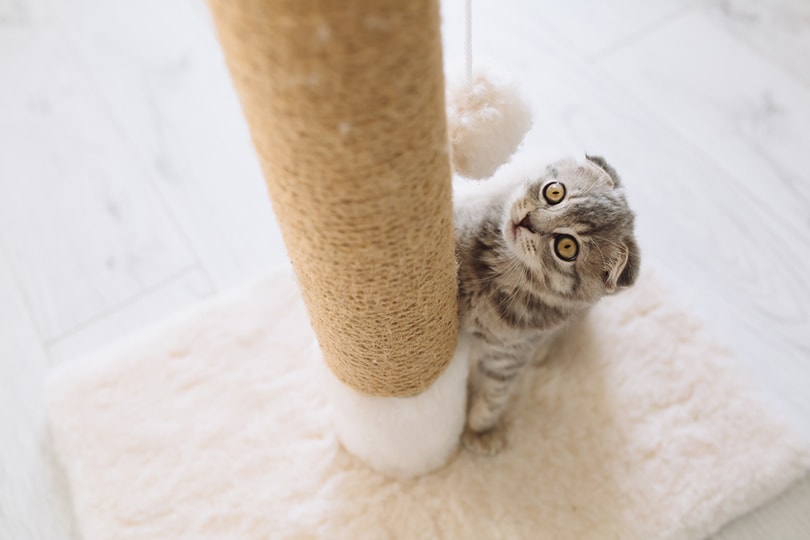
Benefits of Scratching Posts
There are many benefits to scratching posts. Because scratching is an instinctive behavior for cats, giving them their places to scratch throughout their domain is one of the best ways to allow them to be cats without getting into trouble.
- Letting them groom their claws naturally
- Stretching keeps their bodies limber
- Marking their territory makes them feel at home
- Relieving stress whenever they need
- Saving your furniture and other belongings
- Encouraging playtime and exercise
- Promoting socialization with other cats in the home
How Do You Pick the Right One?
Most scratching posts are made of traditional rope or sisal rope. It may have sections of carpet or wood as well. You’ll want to pay attention as your fur baby begins to use their scratching post. Did they try it and not like it? Do they scratch on one surface and not another? You may need to try several posts before determining the surfaces that your kitty prefers.
It is important, though, to choose a scratching post made of high-quality materials with a solid base that isn’t going to tip as they scratch. The taller the post and the heavier your cat, the bigger and heavier the base should be. If the post should tip over as they are scratching, it may scare them away and make them distrustful of any other posts you offer them.
While individual scratching posts and other scratching surfaces throughout the house can help deter scratching of furniture and other no-nos, many cat trees incorporate scratching post sections at various levels, depending on the tree’s overall height. Cats love to climb and naturally find cat trees an acceptable part of their domain. The scratching post sections, by default, are included.
Trimming your cat's nails isn't the easiest task in the world, but a well-designed set of clippers can make all the difference. Our Hepper Cat Nail Clipper Set features two sizes of clippers with easy-to-clean stainless steel blades and a built-in safety guard to prevent accidental cuts. These clippers are comfortable to hold, nicely designed to work at tricky angles, and even include a bonus hidden nail file and a convenient pouch!
What If They Still Don’t Use It?
Not all cats will prefer a vertical scratching post. If you notice them reaching up on furniture or curtains to scratch, it is safe to say that a vertical scratching post is the right choice. However, if they typically scratch carpets and rugs, they may enjoy a flat scratching surface instead. Try a scratching pad or other flat scratcher toy.
If your cat has never used a scratching post before, they may be unsure what to make of the strange object. Rubbing a bit of catnip on the rope or using a catnip spray may help inspire them. Try playing with their favorite toys around the scratching post, so it becomes part of their space, but don’t force them to use it by carrying them to it or purposely putting their paws on it. This may make them feel stressed and associate it with a negative response.
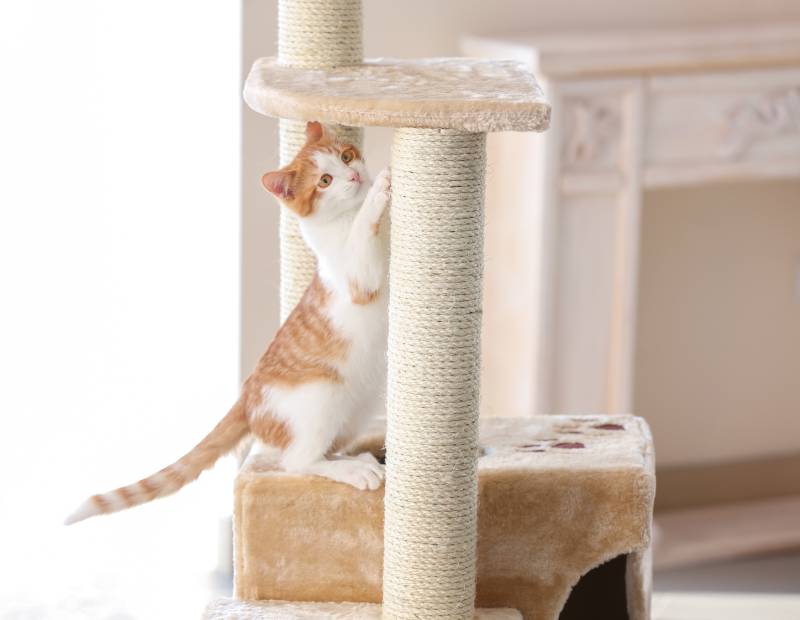
How Often Should You Replace a Scratching Post?
There is no definitive answer to this question. Instead, several factors will determine how often you should replace your cat’s scratching post. Most scratching posts will last anywhere from six months to two years. However, you should always look for signs that it is no longer usable or has become unsafe. Your kitty might also decide when it’s time for a new one by no longer using it.
- The type and size of the post
- The overall quality
- Your cats’ activity level
- How often the cat uses it
- The number of cats in the home
Remember that you should have at least one scratching post for each cat in your home, plus one extra, just for safe measure. Many cats will mark a post as theirs and not want to share, so if one is ready to be tossed out, you should have a replacement available immediately and transition to the new one.
In Summary
Cats will scratch because it’s their instinct as hunters. Scratching is typically a healthy and expected behavior. Giving your kitties their scratching surfaces is essential, and scratching posts are an ideal option. Be sure to choose a high-quality post, pay attention to your cat’s preferences, and take the time to help them adjust to it if it’s something new for them. Once they get the hang of it, their scratching post will be their new favorite spot in the house.
Read Also:
Featured Image Credit: Vadym_Hunko, Shutterstock




